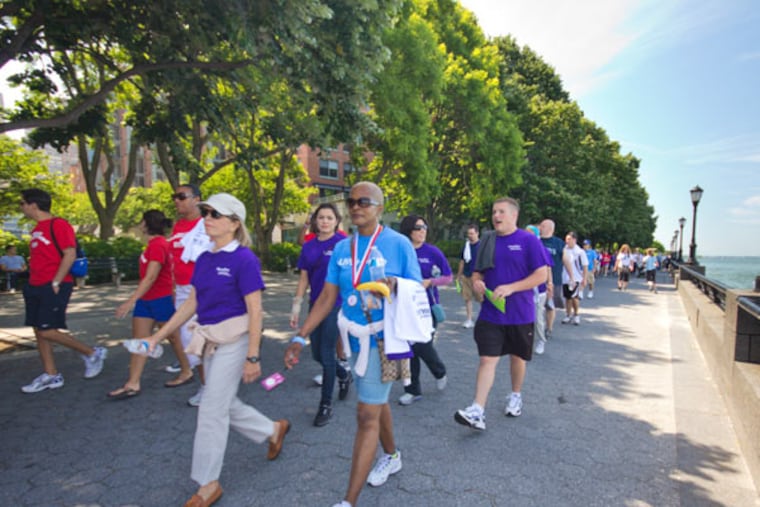
WE AMERICANS pride ourselves on doing everything big: We eat more supersized meals, we spend more money, we spend more time in front of our TV/computer/movie screens, and we even work more hours than our European cousins.
There's just one problem: We're becoming increasingly less active, and inactivity increases our risk for diabetes, heart disease and stroke, to name a few illnesses and conditions.
To help you take the first important steps to a healthier lifestyle, join the millions of Americans across the nation today, April 1, as we celebrate National Walking Day, a health initiative sponsored by the American Heart Association.
Today, all Americans, young and old, are encouraged to lace up and get moving for a minimum of 30 minutes. To keep the enthusiasm going, you'll also want to mark your calendar for this Friday, April 3, for the National Walk to Work Day - an initiative spearheaded in 2004 by the secretary of Health and Human Services - which also encourages Americans to walk for at least 30 minutes.
Why 30 minutes? According to volumes of research, it appears that as little as 30 minutes of sustained walking, five to six days a week, not only reduces health risks for all major diseases, but also improves longevity.
According to a stunning 2004 report by the Centers for Disease Control and Prevention, there is no doubt about the positive advantages of walking on mortality among adults with diabetes. Americans with diabetes who walked for two or more hours a week lowered their mortality rate from all causes by a dazzling 39 percent. The results of that study showed that simply walking extended the lives of people with diabetes regardless of age, sex, race or body-mass index.
With that said, everyone should be encouraged to step up their game and get walking. Thirty minutes minimum daily is modest, yet achievable. Does it get any more inspirational than that?
* But, when should I walk? Although everyone is different, I believe the early bird catches the worm. If you schedule an early morning stroll, you'll more likely achieve your goal. As the day wears on, you wear out, and when the pressure mounts, walking will be the first thing bumped from your schedule. So, I say get it done early.
* What about food - should I eat first? Again, this varies from person to person. If you're hungry, eat a little something; otherwise, don't force yourself to eat if you're not hungry. By "a little something," I mean a piece of fruit, or yogurt, or perhaps a tablespoon of nut butter. More important, just stay hydrated. Drink water before you go out and perhaps carry a little bottle with you, especially on hot and humid days.
* Do I have to stretch? More good news: You don't have to worry about stretching before your walk, because the first 5 to 10 minutes of walking will naturally warm your body up. Save your stretching for the end of your walk - your muscles then are soft and supple and ready for a nice, gentle stretch.
* How fast should I be going? Initially, don't worry about speed; just get moving. Even if you feel you're walking at a snail's pace, it still has exponential benefits. Don't worry about going fast and don't let anyone else dictate your pace. Slow and steady wins the race, but the main thing is to be consistent. Once you are consistently walking, then you can challenge yourself with speed, time and other variables.
* What about calories, how many should I burn? Again, don't worry about calories burned. If your goal is weight loss, you'll simply have to eat less and smarter. You see, many variables can influence calories burned, such as height, weight, gender, fitness level, additional load and even the terrain (much harder to walk on sand than concrete). On average, though, a 150-pound person will burn about 100 calories per mile.
So, come on, everybody, let's all power up today and get more from each step!